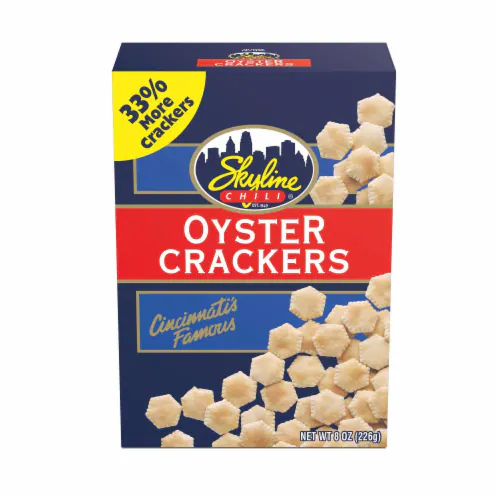
c/o Kroger
When I learned of the negative Skyline Chili experience of Assistant Food Editor Blake Klein ’26, I was dismayed. I would like to assure readers of The Argus that Skyline is far better than that. Having spent every Christmas visiting family in Cincinnati, I know Skyline Chili to be one of the most excellent foods ever created.
Based on the word “chili,” amateur Skyline customers typically expect a chunky, spicy, tomato-based stew. But it’s far subtler than that. Skyline Chili (or Cincinnati chili, if you want to call a Pop-Tart a toaster pastry) is a meat sauce with a delicious medley of mild spices, including chili powder, cumin, Worcestershire sauce, cloves, and cinnamon. It is perfectly complemented by cheddar cheese and is served over spaghetti or hot dogs.
The flavor profile comes mostly from Greece: According to chili scholar Dann Woellert, the dish came about after an influx of immigrants to Cincinnati in the early 1900s, when the collapse of the Ottoman Empire was causing political strife in Macedonia. After brothers Tom and John Kiradjieff founded the Empress Chili Parlor in the 1920s, many other immigrants went on to start their own chili spots, each with a distinct take on the dish.
Cincinnati chili can be served over spaghetti, thus creating a dish known as a Way, or over hot dogs. The nomenclature is pretty simple for 3-Ways, 4-Ways, and 5-Ways: Chili, cheese, and spaghetti are in each of those options, while onions and beans are the elective ingredients. However, it takes a seasoned chili customer to navigate the names of chili-topped hot dogs. A plain hot dog with chili is classified as a chili wiener, while the addition of mustard makes it a Coney. Cheese can be requested with either of these. And by default, a Coney has onion and a chili wiener does not, but you can request otherwise.
In short, ordering a “cheese Coney, no onion” is normal, but “cheese Coney, no mustard” would be gibberish and the speaker would be asked to leave the premises permanently. (They would actually just repeat your order with the correct terminology, like a Starbucks barista confirming a small coffee as “tall.”)
Many of the critiques against Skyline refer to its disconcerting nutritional profile. For example, 40% of the calories in a 3-Way come from shredded cheese. However, that pasta-to-cheese ratio is necessary as it creates the best possible flavor. It can be the delicious part of a complete day of meals—individuals should decide for themselves exactly how many heads of cauliflower they need to counteract a Coney. Skyline would never be so overbearing as to make personal health decisions for you, even though you are free to ask them for the Lite 3-Way with a decreased (suboptimal) amount of cheese.
Skyline’s generous spirit and dietary inclusivity don’t stop there. Vegetarians can enjoy a black-bean-and-rice version of the 3-Way, or an innovative meatless Chilito. Vegans, I presume, would delight in the Cheddar Potato (a side dish that contains no chili) after requesting it without cheddar.
I also consider Skyline oyster crackers to be a national treasure. How many restaurants have a signature carbohydrate that serves as both an appetizer and a topping for your main dish? They can be the perfect entree for a new family member at about 18 months of age—an important rite of passage for a future customer. And these crackers are sold by the box at grocery stores for soup and snacking, evoking fond memories of chili parlors for all who have been lucky enough to visit one.
A chili parlor has the perfect combination of ambience, regional pride, and room to seat a clamoring horde of family and friends. And Skyline, like most things, is improved by sitting around a table with people you love.
Anne Kiely can be reached at afkiely@wesleyan.edu.